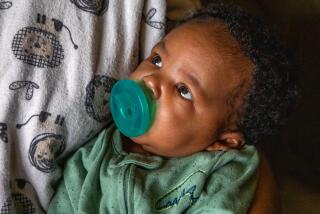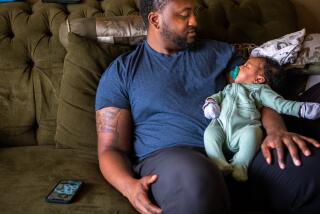Things to consider, come time for sleep
- Share via
What is bed sharing?
Bed sharing is the practice of having an infant share a bed with someone. Although bed sharing can facilitate breast-feeding, infant-mortality experts warn that sleeping with an infant is associated with a risk of accidental death.
What do pediatricians recommend?
The American Academy of Pediatrics recommends that the infant sleep in the same room as the mother, but in a separate crib, bassinet or cradle that meets the safety standards of the Consumer Product Safety Commission.
Infants may be brought into bed for nursing or comforting, but should be returned to their own crib or bassinet when the parent is ready to return to sleep. Cribs or bassinets can be placed close to the parents’ bed to facilitate breast-feeding. Infants should be placed to sleep on their backs.
Some pediatricians and breast-feeding experts have criticized the bed-sharing statement and say mothers can be taught how to make bed sharing safer.
Under what circumstances are infants most susceptible to harm?
Infants can be especially at risk for accidental smothering, suffocation or entrapment when:
* Infants are placed in an adult bed when the parent is excessively tired or under the influence of alcohol or medication that impairs alertness.
* Adults fall asleep with infants on a couch or armchair.
* Babies share a bed with other children.
What other precautions should be taken?
Dr. Angelika Rampal, an assistant clinical pediatrics professor at UCLA’s Mattel Children’s Hospital, does not recommend bed sharing. But if parents insist on bed sharing despite the risks, she offers these tips on how to reduce the danger, in addition to the above recommendations:
* Remove soft, loose bedding and fluffy pillows, which are suffocation hazards.
* Take special care that an infant doesn’t become wedged or trapped between bodies, the mattress or the wall.
*
-- Rong-Gong Lin II







